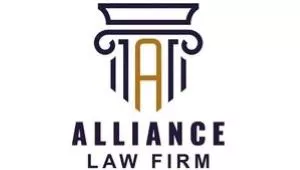The Central Bank of Nigeria (“CBN”) on 25th October, 2021 launched the eNaira, the first Central Bank Digital Currency (“CBDC”) on the African continent. This, unsurprisingly, has generated a lot of interest from many observers with some comparing cryptocurrencies to CBDC while others simply seek a better understanding of the concept of a CBDC. This article discusses Nigeria's version of the concept of a CBDC in comparison with other countries who have CBDC's and the applicable regulatory framework of the eNaira
A CBDC is the digital equivalent of a fiat currency of a Country backed by its Central Bank. In other words, a CBDC enjoys the full weight and credit of the issuing sovereign government. It is therefore important to draw the fundamental distinction between CBDCs and Cryptocurrencies as while they are both digital assets, cryptocurrencies do not enjoy the full weight and credit of any government. Secondly, while CBDCs like fiat currency remain centralized, cryptocurrencies are decentralized and volatile in the sense that they are influenced by many factors which determine the price per unit of a given cryptocurrency, for instance factors such as, but not limited to, supply, demand, and publicity/marketing, influence the price per unit of any given cryptocurrency. Thirdly, Cryptocurrencies provide much greater privacy than CBDCs. This is because cryptocurrency transactions are sent and received through personal wallet addresses which allow users retain some degree of anonymity. CBDCs on the other hand are government issued digital currencies, hence, the Central Bank will have a record of users and their transactions. Furthermore, CBDCs can only be used for payments and other monetary transactions, while cryptocurrencies may be used for monetary transactions as well as for speculative purposes.1
PURPOSE OF CBDC
The purpose for launching CBDCs differ in every country. It is therefore important to ascertain the reason behind the launch of any CBDC in order to understand the purpose that CBDC is to serve in the given country.
For instance, the reason the United States of America is considering a CBDC is to improve its payment system. The Federal Reserve's mandate to promote monetary and financial stability and the safety and efficiency of its payment system requires it to ensure that the public has access to a range of payment options and that financial institutions can effectively provide payment services2.
In Sweden, the eKrona, a CBDC is being considered because of a decline in the use of cash in that society. This is expected to help Sweden save on the costs of processing cash3. In India, a significant number of people are unbanked and setting up physical infrastructure to bank the unbanked is expensive. As a result it is expected that issuing a CBDC will help promote financial inclusion in India4. Like India, Sweden and the United States of America, Nigeria also has its own reasons for considering and issuing the eNaira.
With the eNaira, Nigeria aims to promote and facilitate financial inclusion, enable direct welfare disbursements to citizens, facilitate diaspora remittances, reduce the cost of processing cash, improve the availability and usability of Central Bank money, increase revenue and tax collection, support a resilient payment system and improve the efficiency of cross-border payments5.
As of November 2021, out of the 90 countries being tracked for CBDC, two countries had cancelled their plans for a CBDC, seven countries were inactive, 40 countries were still at the research stage of their CBDC, 14 countries were in development stages of their CBDC,17 countries were at the pilot stages of their CBDC and seven countries had launched their CBDC6. The reason for this might not be unconnected with the earlier mentioned fact that countries issue a CBDC for a variety of reasons that are more often than not peculiar to their economic circumstances. Nigeria is no different.
The eNaira is a digital version of the fiat currency that provides users with a lawful digital option for making payments. The objective of the eNaira is to enable households and businesses to make fast, efficient, and reliable payments, while benefiting from a resilient, innovative, inclusive, and competitive payment system. From the said objectives, it could be said that the eNaira was launched to grow retail financial services sector in Nigeria.
TYPES OF CENTRAL BANK DIGITAL CURRENCIES
Granted that from the foregoing objectives the eNaira could be said to have been launched to grow retail financial services sector, the fact of the matter is that CBDCs can be classified into two main types, namely: wholesale CBDC and retail CBDC. Wholesale CBDCs are primarily utilized by those responsible for issuing, managing and maintaining it such as the CBN while the existing financial institutions (“FIs) such as banks use them to make payments quicker and in a more automated manner7. Retail CBDCs on the other hand are primarily used by individuals, essentially as digital cash. The eNaira is a retail CBDC aimed at enabling direct welfare disbursements to citizens, facilitate diaspora remittances, reduce cost and improve the efficiency of cross-border transactions. Other countries considering the launch of retail CBDC but are presently in the development stage include Russia, Turkey and Brazil.
DESIGN INFRASTRUCTURE, ARCHITECTURE AND ACCESS OF THE eNAIRA
The eNaira has a two-tiered hybrid CBDC architecture where the CBN is responsible for issuing, managing and maintaining the eNaira while the existing financial institutions (“FIs) are to direct engagement with users for distribution of the CBDC, payment facilitation, dispute resolution and other roles as may be defined by the CBN. The eNaira can be compared to other CBDCs like the Bahamas Sand Dollar which also possesses a hybrid architecture.
Furthermore, the eNaira infrastructure is based on the hyper ledger fabric variant of the distributed ledger technology (DLT). The reason behind this choice of infrastructure for the eNaira is simply because the DLT inhabits the core requirements for FIs, has a robust security architecture, is configurable, versatile, optimisable, scalable, and open to innovation8. This choice of infrastructure seems to have gained wide acceptance as seen in the case of the Sand Dollar of the Bahamas. Other countries considering the same infrastructure in the pilot stages of launching include Sweden, United Arab Emirates, Saudi Arabia and South Korea.
In order to access the eNaira, one must have an account. This account based model enables access to financial services by leveraging last mile networks to identify users and to provide banking services through channels such as Point of Sale (POS) and Unstructured Supplementary Service Data (USSD)9. With the account-based model, the CBN seeks to enable access by leveraging the existing identity infrastructure in Nigeria such as the Bank Verification Number (BVN), National Identification Number (NIN), Tax Identification Number (TIN), etc., to uniquely identify individuals and corporate entities. Specifically, identity frameworks such as the NIN will enable access for the financially excluded as they can be uniquely identified thereby enabling the provision of financial services. These identity systems will help ensure a robust Know Your Customer (KYC) framework positioned to enable access for all Nigerians10.
The eNaira access model is being tested by China, Jamaica, and United Arab Emirates, who are all in the pilot stages of developing their respective CBDCs to operate an account based model. Also, Russia and India who are in the development stages of their CBDC are developing their CBDCs to operate the account based model.
DRAWBACKS OF THE CBDC
Despite the benefits of the CBDCs as highlighted above there are certain drawbacks. Since access to the eNaira platform is account based, it is vulnerable to cybersecurity risks. Like FIs and Service Providers, the eNaira platform is not exempt from the challenges of fraud risks faced by the financial sector in Nigeria. It is no secret that Nigeria has some of the most advanced electronic payment capabilities in the world11. However, the increase in transaction processing speed and available channels comes with an unavoidable side effects - more avenues for fraudulent transactions12. In addition because access to the eNaira platform is account based it is vulnerable to account data breaches and theft which in turn would lead to account funds and data being compromised by fraudsters.
Furthermore, CBDCs like any digital payment system are also susceptible to counterfeiting and scams. At some point the Chinese authorities in October 2021 noted fake digital yuan wallets, especially because the government had chosen to give away $6.2 million worth of digital yuan for free to citizens to encourage adoption. Perhaps for the same reason the Nigerian government through the CBN press release of 27th October 2021, put to rest the rumours that it had disbursed N50 billion in eNaira to encourage adoption13. These are examples of the drawbacks of the eNaira.
REGULATORY FRAMEWORK OF THE eNAIRA
In line with the CBN's mandate to issue legal tender currency, ensure the stability of the financial system, promote the development of electronic payments system14, the apex bank released its Regulatory Guidelines on the eNaira on October 1st, 2021 which applies to all FI's and users of the eNaira. The CBN shall be exclusively responsible for the minting, issuance, distribution and redemption of the eNaira15. FI's would serve as brokers between the CBN and customers, and will be responsible for facilitating the eNaira wallet on-boarding for bank customers (merchants and customers), amongst other responsibilities. FI's are to give customers the option of an alternative channel for making transactions using the eNaira, provide cashback to customers, and publicise the option of eNaira payment for transactions at merchant locations. Merchants are to be on-boarded by FI's upon fulfilment of specified requirements16.
Ministries, Departments and Agencies (MDAs) are allowed to receive revenue and make payments in eNaira. MDAs shall be on-boarded by the CBN upon receipt of the appropriate mandate17. Lastly, the roles of consumers as end-users of eNaira include:
- the creation and funding of eNaira wallets;
- utilising eNaira as an alternative payment option for legitimate transactions; and
- protecting their eNaira wallet access credentials and notifying financial institutions in the event of fraud/complaints/disputes.
Consumer's on-boarding shall be self-service upon fulfilment of the requirements18.
Further, the CBN Regulatory Guidelines stipulate the existence of different wallets for the different stakeholders. The CBN will be the sole owner of the eNaira stock wallet and it shall warehouse all minted eNaira. FI's are to maintain treasury eNaira wallets to warehouse eNaira received from the CBN eNaira stock wallet and are also permitted to create eNaira sub-treasury wallets for their branches, and to fund them through their treasury eNaira wallets. Merchants are permitted to have speed wallets which shall be used solely for receiving and making eNaira payments for goods and services. The eNaira speed wallets will also be available to end-users to transact on the eNaira platform.
The said CBN Regulatory Guidelines also set down the different tiers of the eNaira wallet. Tier 0 users are only required to hold telephone numbers, and their daily spending limit is pegged at NGN20,000 and they can have a cumulative balance of NGN120,000. Tier 1 users are required to hold both a telephone number and NIN. Individuals who fall into this Tier can spend up to NGN50,000 daily and can have a cumulative balance of NGN300,000. Tier 2 users are required to have bank accounts with BVN, they have a daily spending limit of NGN200,000 and can have a cumulative balance of NGN500, 000. Lastly, Tier 3 users are also required to have bank accounts with BVN and a public utility receipt. The daily limit under this Tier is NGN500, 000 and they can have a cumulative balance of NGN5,000,000.
KEY POINTS eNAIRA USERS NEED TO KNOW
eNaira users need to know the following:
- During the on-boarding process on the eNaira platform, users are expected to download the eNaira app from either the Google Play Store or Apple Store and complete the registration process.
- Users are expected to be linked with a commercial bank in compliance with the AMT/CFT guidelines.
- The CBN would be able to identify users on the platform using the identified frameworks: Bank Verification Number (BVN) and National Identity Number (NIN).
- Once the eNaira wallet is created, users will be able to make peer-to-peer (P2P) payments to anyone with an eNaira wallet without the need of an intermediary.
- There are different tiers of the eNaira wallet which require different levels of identification.
- The eNaira and the fiat Naira will always be exchanged 1:1, hence, it would appreciate when the Naira appreciates.
- Two factor authentication shall be adopted to ensure security of the eNaira wallet.
- Money held in the eNaira wallet will not gain any interest.
- The charges for eNaira transactions shall be in line with the Guide to Charges by Banks, Other Financial and Non-bank Financial Institutions19. However, going by the regulatory guidelines released by the CBN charges for transactions that originate from the eNaira platform will be free in the first 90 days commencing from October 25th, 2021.
- Consumer Complaints concerning the usage of the eNaira shall be referred to the Helpdesk of users' preferred FI Helpdesk. If unresolved by the FI Helpdesk, it shall be escalated to the eNaira Helpdesk via 0800myeNaira (0800 6936 2472) or helpdesk@enaira.com for resolution20.
CONCLUSION:
Although the eNaira platform is built with deep consideration around privacy and data protection, its implementation presents a risk to the existing financial system and its participants in terms of data breach and losses through cyber crimes. Since the eNaira is a digital currency, the eNaira platform can be exploited by users who may try to exploit vulnerabilities within the eNaira payment system. The CBN acknowledged this risk in its design paper and stated that in order to address the cybersecurity risk, it would provide IT security governance over the eNaira system, conduct regular IT security assessments to identify vulnerabilities and strengthen the system. Also, traditional security core of confidentiality, integrity, and availability (CIA) together with strong internal control measures will be implemented to address exposures and enhance overall security on the platform.
On a positive note, the eNaira app had over 100,000 downloads shortly after its unveiling before the initial technical glitches that caused its temporary removal of the eNaira App from App stores21.
With more downloads of the eNaira expected to be seen in 2022 and beyond, it is clear that the eNaira has definitely ushered in a new dimension to payments in Nigeria.
1 https://academy.shrimpy.io/post/cbdc-vs-cryptocurrency-what-are-the-core-differences
2 https://www.federalreserve.gov/faqs/what-is-a-central-bank-digital-currency.htm
3 https://www.riksbank.se/en-gb/payments--cash/e-krona/
5 https://www.enaira.gov.ng/download/eNaira_Design_Paper.pdf
6 https://www.atlanticcouncil.org/cbdctracker/
9 Ibid.
10 Ibid.
11 https://nibss-plc.com.ng/media/PDFs/post/NIBSS%20Insights%20Fraud.pdf
12 https://nibss-plc.com.ng/media/PDFs/post/NIBSS%20Insights%20Fraud.pdf
13 https://www.cbn.gov.ng/Out/2021/CCD/Press%20Release%20Fake%20eNaira%20Twitter.pdf
14 Central Bank of Nigeria Act 2007 and the Banks and Other Financial Institutions Act 2020.
15 CBN Regulatory Guidelines on eNaira
16 Ibid.
17 Ibid.
18 Ibid.
19 Central Bank of Nigeria Regulatory Guidelines on the eNaira, https://engineersforum.com.ng/wp-content/uploads/2021/10/Regulatory- Guidelines-On-The-eNaira.pdf
20 Ibid.
The content of this article is intended to provide a general guide to the subject matter. Specialist advice should be sought about your specific circumstances.



